Creating a fursona is one of the most universal behaviours in the furry fandom.1 Defined as anthropomorphic animal representations of the self, furries interact with other members of the fandom through the use of these avatars, both in-person (e.g., badges at conventions) and online (e.g., profile pictures, forum handle). Fursonas can differ dramatically in the amount of detail they entail, and can include distinct personalities, histories, relationships, and attitudes. At very minimum, however, most fursonas include a name and a species.
Furries and non-furries alike frequently ask about fursona species, usually asking about the most unusual species or wondering what the most frequently chosen species are. In an online study, we collected information on more than 6,000 distinct fursonas, which were categorized into 852 unique species (which were subsequently organized for ease of presentation.)2
Many of the species listed were unique and, as such, cannot be presented in order to preserve the anonymity of our participants. In the figures that follow, such species are aggregated in the “other” categories for the most relevant group.
First, we present the data for all species. We then proceed with a group-by-group breakdown of popular categories. Within each category, “unspecified” means that the species was simply identified as the category (e.g., within the “wolf” category analysis, “unspecified” refers to people who just put “wolf” rather than any specific breed/type of wolf).
Please note that this category breakdown is not meant to reflect biological taxonomy or cladistics, but is instead meant to be a close approximation of how groups of similar species “clustered” together (e.g., the authors know that a wolverine and a badger are not “rodents,” but included them in with “small furry mammals” for ease of analysis).
* Note that the “other” category here represents 52.1% of all the listed hybrids (and represent unique or exceptionally rare identified hybrids).
In addition to assessing the most popular species furries choose for their fursonas, recent studies have also begun to look at other aspects of fursona choice. For example, one study recently looked at whether furries tend to choose fursonas that are more feral (look like an animal) or anthropomorphic (resemble a human).3 This question was asked as a 7-point scale ranging from 1 (Completely feral) to 7 (Completely Anthro). The results, posted below, reveal that the vast majority of furries create fursonas that are predominantly anthropomorphic.
In the same study, we also tested whether there were predictable differences in the type of furry who chooses a more anthropomorphic/feral fursona. Results revealed very few differences: therians were more likely to adopt feral fursonas (and, in fact, many would not even consider it to be a “fursona” so much as the animal aspect of themselves), as were women. Factors that were unrelated to fursona anthropomorphism included age, extent to which one identifies as a furry, sexual orientation, years as a furry, owning a fursuit, and mental health.
References
- See 3.8 Number of Fursonas
- International Online Furry Survey: Winter 2011
- Anthrocon 2016 Study

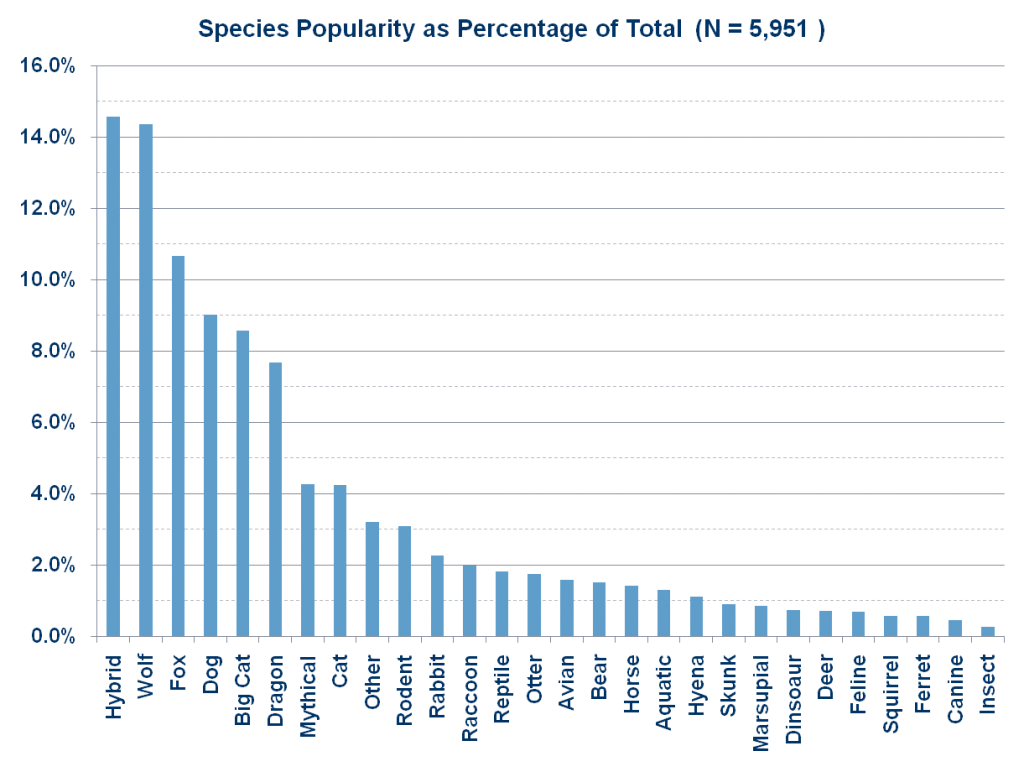
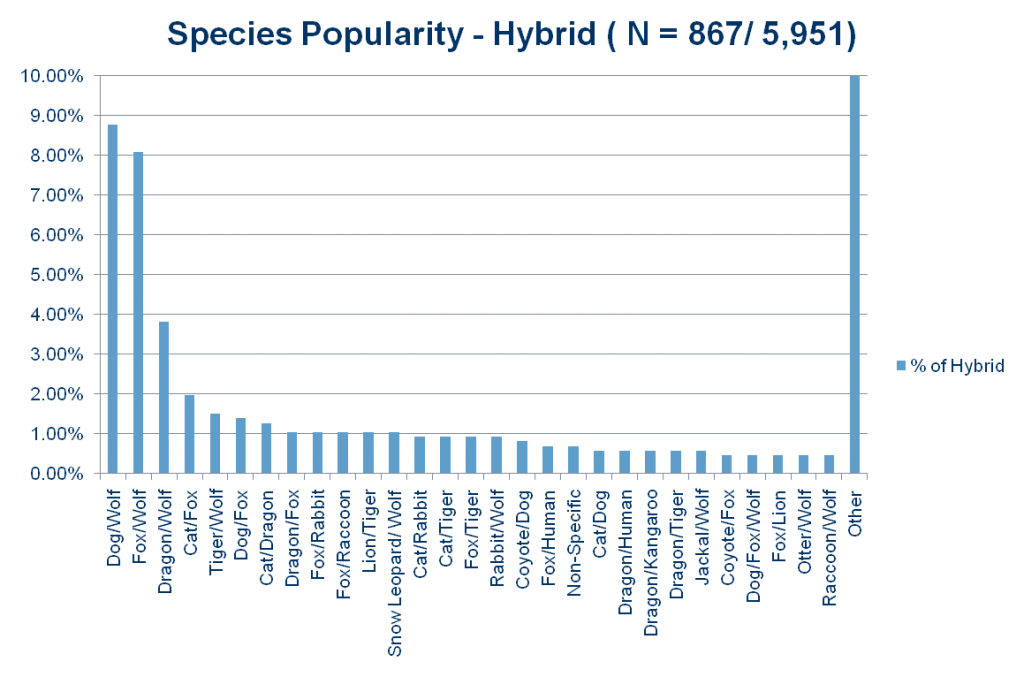
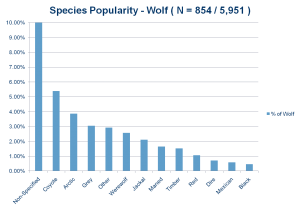
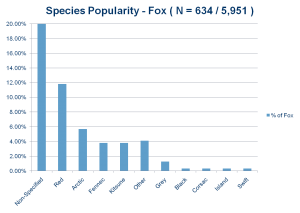
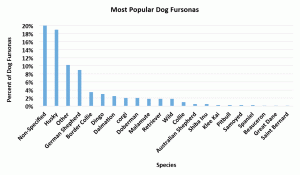
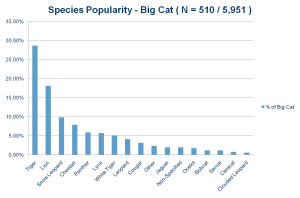
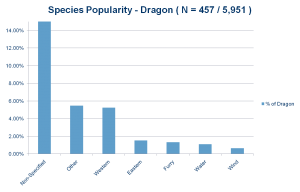
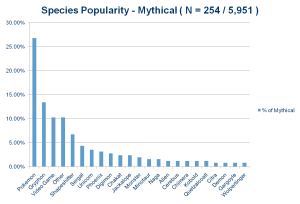
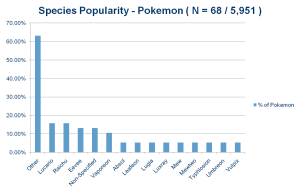
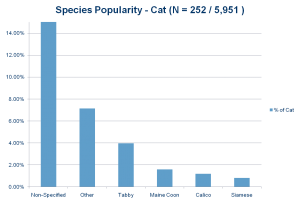
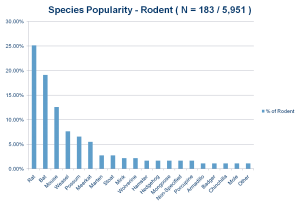
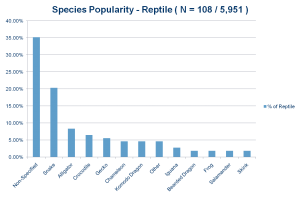
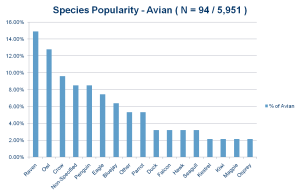
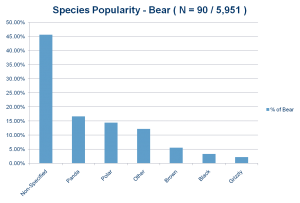
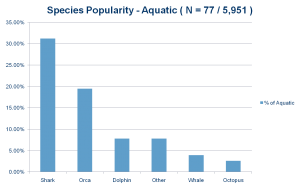
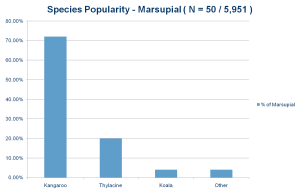
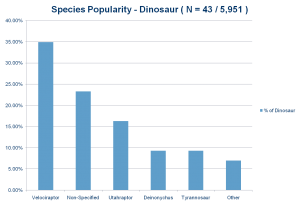
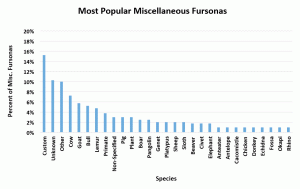
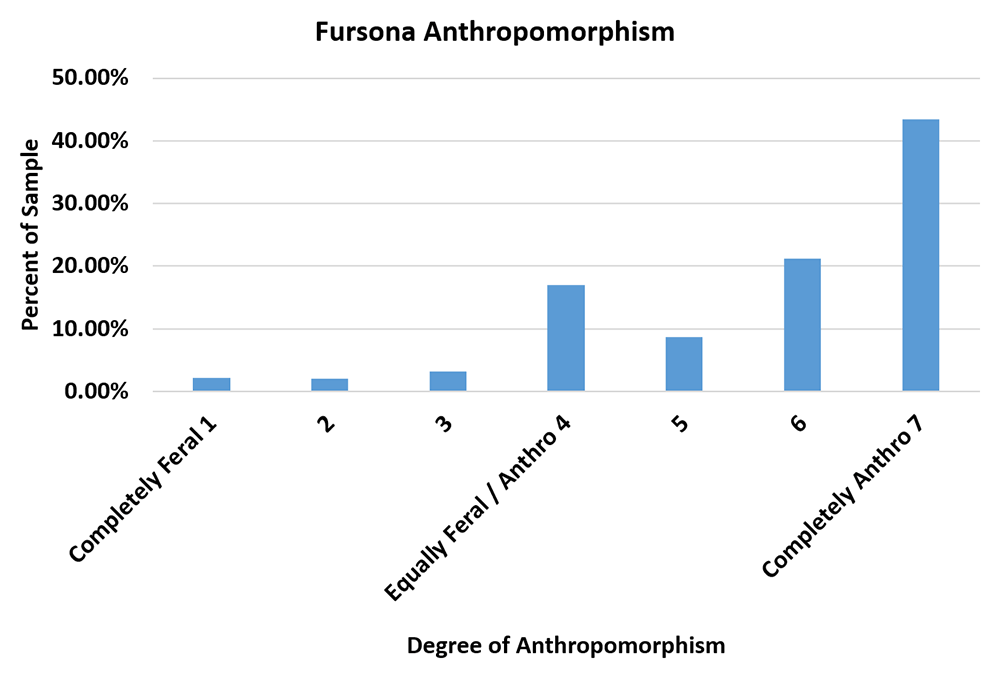
You have “bat” under rodents. Bats are actually more related to humans than to rodents! They should go in “misc”.
Can you add horse breeds please. I’m curious to see if more people like mytholical, draft, or standard horses
BAT IS BAT
Can you add more about wolves plz?
I feel pretty left out…you don’t include squirrels or chipmunks. I’m a chipmunk myself and I’m bummed by this
I wish us chipmunks were more prevalent and represented
Yeah its actually sad that chipmunk are not that popular
This helped a lot.
I’m guessing that Wallabies are a statistical anomaly then, huh?
i’m a wolf so can you add more about us
Seriously? You put Weasels, Stoats, Mink, Meerkats, Wolverines, Martens, Badgers, Mongooses, Moles, Hedgehog, Armadillo, Bat, and Possum in Rodents? You really did like zero research, did you? Don’t claim to be doing science and then get this much wrong in a single graph.
Bats, Moles, Armadillos, Hedgehogs, Possums, and Mongooses & Meerkats are all in completely different Orders (Rodentia is an Order) from Chinchillas, Rats, Mice, Hamsters, and Porcupines… the same Order that contains Chipmunks, Squirrels, Gophers, Prairie Dogs, Capybaras, and Beavers. As for Weasels, Martens, Stoats, Minks, Ferrets, Badgers and Wolverines… they’re all Mustelids… which are Carnivores. This is akin to putting Bears in the same group with rats.
And you have no excuse for Possums… they’re Marsupials! You have that group. This is just sloppy.
In the general terms, our goal is to describe the fandom, as represented by Furries, not prescribe to the fandom. While we know those species aren’t rodents, biologically cladistically, they could be lumped charitably into the category small mammals, and rodent seemed small enough as a representative species for subcategory for grouping “like” fursonas of that type broadly, rather than strict biological taxonomy specifically. However, we appreciate some of the confusion, and perhaps rodent wasn’t the right term. The point of the chart was to illustrate and differentiate the popularity of the various fursonas within the fandom. The data is self-reported.
As an update, we’re currently working on recoding the classifications, and all of the feedback, including yours, will be considered.
So I’d like some more represent in the naked mole rat area
It was said in through beginning that it is not based of biology, but rather, what animals are similar, and rodents was defined as small furry mammal
include dutch angel dragons
So im a deer cat hybrid any chance you g=could add it also my fursona name is deery
So… geese aren’t that popular? Perfect! PLAN G WILL BE PUT TO ACTION IMMEDIATELY!!!
Hey I just wanted to mention possums are marsupials not rodents! Love the article though!
Red pandas would be good to have in this.
This helped me to see that my fursona is unique
But I would like more alien dogs in the fandom though
Okay, there’s just one problem I have. I see that possum is in the rodent category. I don’t know if you mean the American opossum or the Australian possum, but either way, it would be in the marsupial category. Just had to say that, sorry. It just kinda triggers me. But other than that, it’s really great and interesting to me! ^^
where is protogen?
Protogen is a relatively new species, and though they’re popular enough to make it into a few surveys, more recently, they were just not frequent enough at the time the data was collected a few years ago. We’re looking to put together an updated list/graph sometime soon, so stay tuned!
It would be nice to see possibly something about the original species of the fandom, such as Dutch angel Dragons, protogens, and other species that are created by the community.
hm i will try that and see
Are miscellaneous fursonas the and Other the same?
It’s been a few years since we compiled and graphed that data, but yes seems to be the answer to your question.
bat